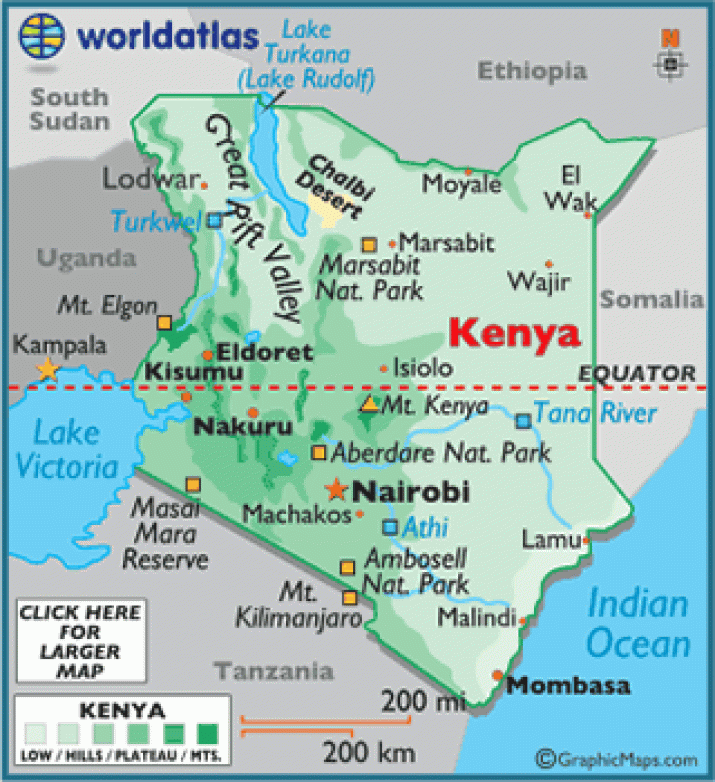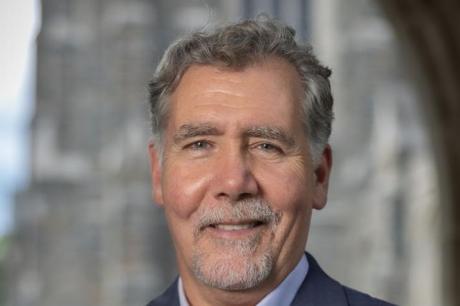
Published March 7, 2008, last updated on March 21, 2013
Bob Einterz loves to tell stories. So that’s what he did when he gave the University Seminar on Global Health lecture on March 6. He told the story of Daniel, a medical student at Moi University in Eldoret, Kenya who was the first person in the town to experience the “Lazarus effect” of antiretroviral therapy (ART) in 2001. He told the story of Rosa, who failed to thrive on ART until careworkers realized she had no money to buy food and was literally starving to death. And the story of Nancy, whose photo shows her proudly displaying the large chart that proves that she – an ordinary Kenyan – can adhere to a complicated regimen of multiple medicines because she knows her life depends on it.
Einterz, who is a professor at the Indiana University School of Medicine, told these stories to illustrate the growth, challenges, and successes of AMPATH – the Academic Model for the Prevention and Treatment of HIV. Einterz co-founded AMPATH in 2001, building upon an existing successful educational partnership between Indiana University and Moi University.
“We went to Kenya [in 1989] to help start a medical school,’ he said. “And we would have been happy with this program and how it was improving health in the area if it had not been for the HIV/AIDS crisis. The death rate in our hospital from HIV/AIDS increased 10 fold over the course of 10 years. In the mid-90s, mortality from AIDS was dropping in the US because of ART, but in Sub-Saharan Africa, it was climbing because the drugs were not available.”
It wasn’t until the near death of Daniel – described by Einterz as “one of our medical school ‘family’” – that Einterz and his colleagues decided to tackle treatment of AIDS. Einterz described how, over eight years, the AMPATH program has grown rapidly. It now serves over 65,000 people living with HIV/AIDS (PLHA) and includes a food subsidy program, a program to help families earn income, and robust academic research nested in community-based care. “We have created a model that we believe is replicable and scalable,” he said. “In a country where there is very little healthcare, we have created a care system that can host the research and education missions of an academic center. Now we need to take the successes built from the grassroots and scale it up.”
The Impact of Violence on Healthcare
Einterz devoted the last 20 minutes of his talk to a somber reminder that the success of programs such as AMPATH may have been compromised in recent months by the violence in Kenya following the disputed elections in December 2007.
“Whole villages were leveled. 300,000 people were left homeless and forced to live in camps for internally displaced persons,” he said, showing a photo of a row of 10x10 tents, some housing as many as 9 people. “You can imagine the general challenges these camps pose for a woefully under-resourced area. Then add to that the need for people living with AIDS to have regular access to their medicines” to prevent drug-resistant mutations of the HIV virus from developing.
AMPATH clinics were not damaged, and thanks to the courage of many Kenyan employees, the clinics remained open despite the violence. “We, as AMPATH, will survive,” he said. “The question is what will happen to our patients? How much [drug] resistance has been bred by the egos of the people in Nairobi who failed to step away from the brink in time? We don’t know the answer to that yet.”
The University Seminar on Global Health is a monthly series of talks sponsored by the Duke Global Health Institute and the Duke Center for International Studies. The next talk will be given by Kim Thompson, of Harvard University, on Polio Eradication and Risk Management: Insights from Global Health. The lecture takes place on March 20 at 4 p.m. in the John Hope Franklin Center Room 240.


